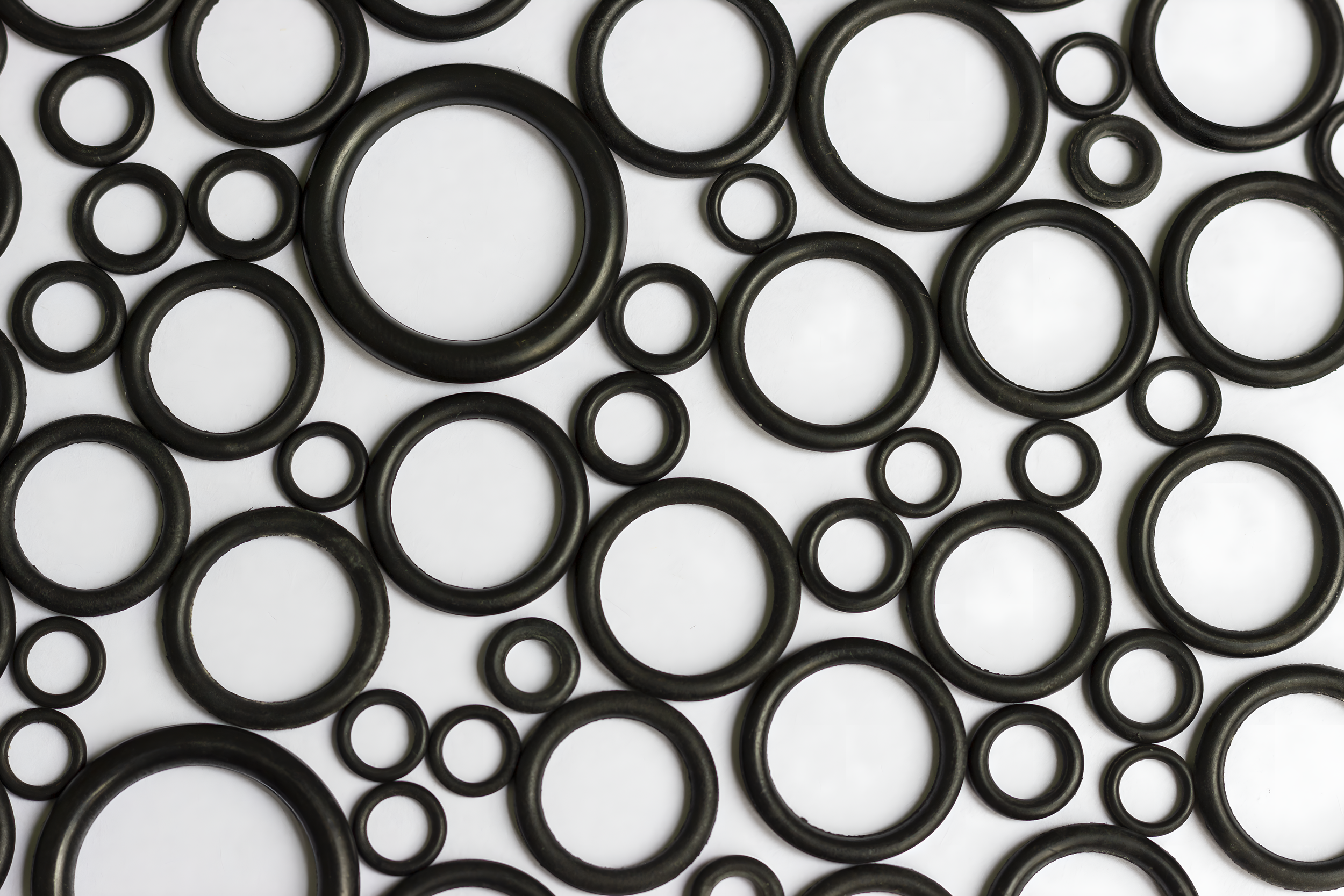
O-Rings
O-rings have become very common seals in the industry over the years, due to their simple shape, availability, and the vast selection of sizes, materials, and compounds in which they can be supplied, along with their low price for some materials. O-rings seal by being compressed between two or more elements in the sealing groove structure. During compression, the pressure on them causes deformation and increases the sealing efficiency.
Sizes of O-rings:
The sizes of O-rings are derived from the diameter of the wire and the inner diameter of the O-ring. The O-ring can be measured to identify it using calibers or a specially designed cone for this purpose. Identifying the material and hardness of the O-ring is more complex and belongs to professionals who use their accumulated knowledge, such as the weight of the material, its color, and hardness testing with a specialized device for this purpose. The production of O-rings is done through a process of pressing and molding, but also through a process of molding wire O-rings in cases where the dimensions are non-standard.
O-rings are manufactured according to the standards accepted in each country, such as AS568A in the USA, BS1806 in England, DIN 3771 in Germany, and many others. In total, we are capable of supplying approximately 30,000 standard sizes, each produced from all known elastomers in the field of O-rings. O-rings can be used in both static and dynamic applications.
When choosing the right O-ring, the following should be considered:
Static or dynamic use
Selection of the appropriate material/elastomer
Selection of size
Selection of hardness
Selection of compound
Since O-rings are made from elastomers, great importance should be attributed to the product's lifespan and its storage conditions. The lifespan of O-rings varies from one material to another and ranges from 5 to 20 years under perfect storage conditions.
An O-ring is a ring made of elastomer/rubber with a round cross-section, designed to sit in a groove and be compressed between two or more parts during assembly, thus creating a seal.
An O-ring can be used in static or dynamic applications where there is relative motion between the parts and the O-ring. Dynamic examples include rotating pump shafts and hydraulic pistons.
O-rings are among the most commonly used seals in machinery because they are inexpensive, easy to manufacture, reliable, and have simple installation requirements. They can seal at pressures of tens of megapascals (thousands of psi).
Common Uses:
O-rings are found in a wide range of industries, including:
Tereefek Solutions offers O-rings in a Wide Range of Sizes (AS568, ISO 3601, BS 4518, GB, JIS, SMS 1586, millimeters, and non-standard sizes) manufactured with various properties (hardness, compression set, etc.), tolerances, materials, standard and approved blends for drinking water, the medical field, and more. Additionally, our O-rings meet the highest military specifications, FDA, NSF61, and other standards.
Our extensive inventory of O-rings includes over 10,000 different sizes and a total of 30 million units, including Viton™ and Kalrez™ products.
Minimum order quantities can be placed for O-rings in stock, and a longer lead time is required for sizes and materials not currently in stock.
Special molds can be produced for manufacturing non-standard sizes in cases where such precision is required.
Read more about ERIKS NBR O-rings
Read more about ERIKS EPDM O-rings
Read more about ERIKS FKM / Viton® O-rings
Read more about ERIKS Silicone O-rings
Read more about ERIKS Fluorsilicone / FVMQ O-rings
Read more about ERIKS Aflas® O-rings
Read more about ERIKS Neoprene® CR (Chloroprene Rubber) O-rings
Read more about ERIKS PU (Polyurethane) O-rings


